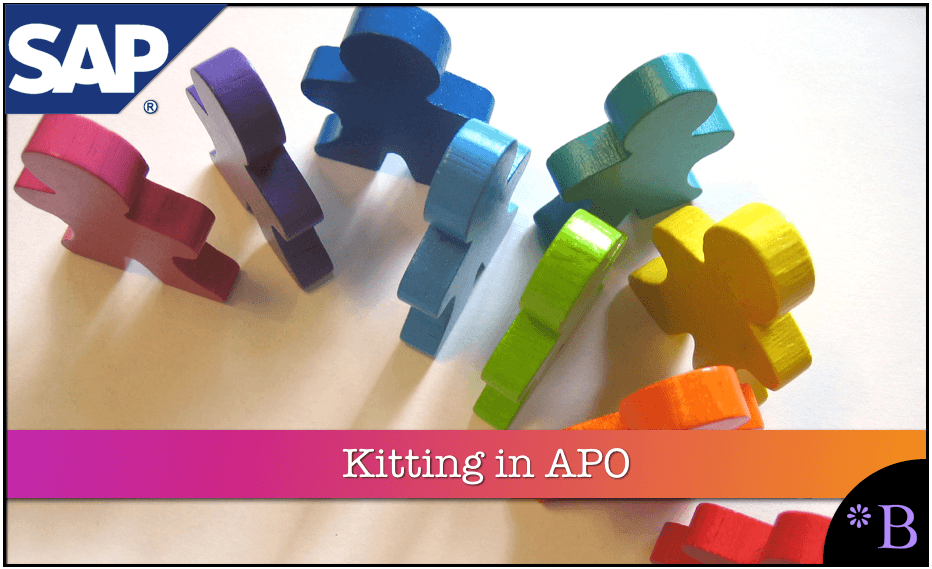How to Understand Kitting in SAP APO and EWM
Executive Summary
- Kitting is a mechanism for combining products into a kit.
- Kitting is supported in EWM.
- We cover the EWM kit to order, kitting in reverse, and the two processes in kitting.

What Is Kitting?
Kitting is the practice of managing items as a group. A kit is essentially a BOM that is not part of manufacturing. A good example of a kit is an automotive repair kit sold with cars or a service kit used with machinery or aircraft.
Where in SCM?
Kitting is located most prominently in two modules of SCM.
- EWM
- SPP
SPP plans the kit while EWM combines (or breaks down the kit) in the warehouse. When kit to order is used in EWM, it requires the integration of SAP CRM. However, with a kit to stock, EWM can execute the kit based upon the kitting information sent from SAP ERP.
Two Processes of Kitting
Two kitting processes are supported in EWM.
- Kit to order (based on customer order) – requires CRM 5.0 or higher.
- Kit to stock (based on a forecast)
“Many manufacturers had an early impact into the WMS software community and some of the WMS solutions can perform light manufacturing. Many WMS have advanced kitting options that mimic light manufacturing concepts to track labor utilized.” – Philip Obal, Selecting Software from WMS and ERP Providers.
A kit is simply a list of products that need to be delivered together.
Kit to Order
In kit to order, the following rules apply.
- A kit is always delivered in full to a customer.
- The kit header and kit components are always scheduled for the same date.
- All components for the kit must come from the same warehouse.
- Kit prices are always calculated at the header level.
- The kit header and kit components have a quantity ratio.
From kit to stock, the kit is created and stocked before the order. The outbound delivery order and the warehouse request document contain the component items for the kit.
Kitting in Reverse
Reverse kitting is the process of splitting kits up into their components. This process is started in EWM. The overall process of reverse kitting is similar to a kit to stock. When the VAS order is created to begin the reverse kitting process, two deliveries are created – an inbound delivery document containing the kit product and an outbound delivery order containing the kit product.
Kitting is a value added service and is covered at this link.